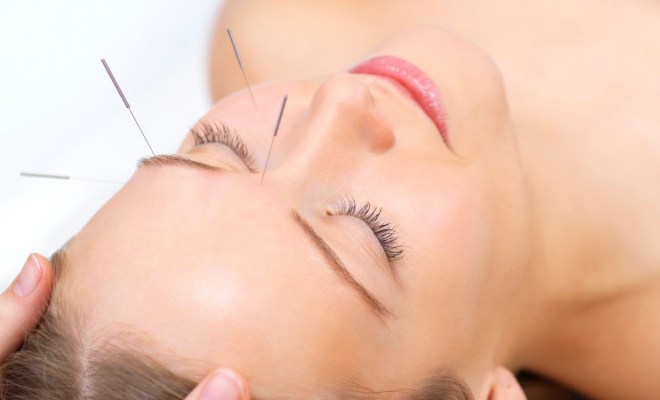Acupuncture is among the oldest healing treatments in the world. While far from being considered mainstream in the United States, it’s growing in popularity. According to the latest data, approximately 3.1 million adults and 150,000 kids in the United States receive acupuncture treatment every year. It is a really safe and effective form of treatment for a wide range of conditions.
Even although acupuncture has been used for thousands of years, scientists are still trying to determine how it works. Many scientific studies are currently underway and plenty of other studies have shown promising results about the efficacy of acupuncture. This treatment offers a number of benefits to patients and has a low risk of side effects.
History of Acupuncture
Researchers have found sharpened stones and bones in China that suggest that the practice of acupuncture dates back to 6000 BC. More definitive evidence shows that the Chinese clearly used acupuncture in 200 BC and following years. The entire history of cumulative research and medical practice surrounding acupuncture emerged in the 1950’s. In those years, China established a formal research institute to study acupuncture and the treatment was widely available in Chinese hospitals. Even so, it would take a few more years for the practice to become known in the United States.
In 1971, a US reporter traveled through China with President Nixon. He fell ill and needed an emergency appendectomy. While recovering, she received acupuncture and was impressed by the pain relief it provided. He wrote about his experiences in New York Time and the article garnered so much attention that a team of doctors from the United States traveled to China to explore the benefits of acupuncture. This treatment received additional attention in 1997 when it was officially recognized as a method of medical treatment by the United States National Institutes of Health.
Types of Acupuncture
Acupuncture can be used to treat a broad range of diseases and injuries. Depending on the patient’s specific symptoms, the acupuncturist will use Traditional Chinese Medicine (TCM) techniques or use Physical Medicine Acupuncture (APM).
Traditional Chinese Medicine (TCM)
TCM acupuncture is the most popular form of acupuncture practiced in the United States. Using this method, the acupuncturist seeks to balance the flow of significant energy (known as qi) in the patient’s body. This energy flows through pathways (known as meridians) and influences how the mind and body work. Balance will also address the eight major components: yin/yang, internal/external, excess/deficiency, heat/cold.
Using this concept, TCM acupuncture can be used to treat acute or chronic conditions. These include chronic aches or pains from surgery, nausea from chemotherapy, headaches, arthritis, anxiety, insomnia, allergies, eczema, digestive problems, asthma, amongst others.
Physical Medicine Acupuncture (APM)
APM was developed 25 years ago by Dr. Mark Seem. This type of acupuncture is a combination of modernized TCM and westernized physical medication. APM uses the meridians, but also looks for muscle constriction points and trigger points (similar to “knots” in a muscle). An APM practitioner feels the patient’s muscles and inserts the needles, much like in TCM acupuncture. The shallow needle insertion encourages the trigger point to release and allows the muscle to return to normal function. Once released, the muscles can receive more nutrient-rich blood and oxygen. This can lead to substantial pain relief.
APM can be used to treat a wide range of conditions: sports injuries, gastrointestinal problems, carpal tunnel syndrome, stress, acid reflux, and chronic pain.
6 Benefits of Acupuncture
Patients receiving acupuncture can often see positive results, even in situations where traditional, westernized treatments haven’t been able to help. Here are six of the most common benefits of acupuncture.
1. Pain Relief
Nearly 70 percent of adults who receive acupuncture treatment seek pain relief. This includes patients with back pain, neck pain, muscle pain, fibromyalgia, headaches, knee pain, menstrual cramps, tooth pain, and tennis elbow. Of all the benefits of acupuncture, scientists have done the most research on pain relief. Their research shows that acupuncture encourages the body to release opioid peptides and endorphins. This is a naturally occurring brain chemical that turns off pain signals and reduces overall pain levels.
2. Heals Injuries
When an injury occurs, the body’s energy flow is obstructed and disrupted. This generally appears as pain and swelling at the site of the injury. With acupuncture, the body is ready to release natural pain relievers, natural anti-inflammatory hormones and anti-stress hormones. Treatment can reduce the occurrence of muscle spasms and increase the range of motion of the injured area. Healing time is drastically reduced because there’s an increased flow of nutrient and oxygenated blood to the injury site. Acupuncture can even improve performance after an injury.
3. Reduce Use of Prescription Drugs
Often, acupuncture patients find that their treatment enhances the impact of their current treatment or heals their body in such a way that their medicine is no longer needed. For example, one study found that the efficacy of Prozac was enhanced when depressed patients also received acupuncture treatment. Another study found that, in individuals with acid reflux, treated with acupuncture was as effective as doubling their dose of antacid medicines. Similar results can be seen when comparing acupuncture to prescription pain relievers—acupuncture is highly effective at treating the underlying explanation for pain and individuals no longer need high doses of pain relief.
4. Improves the Immune System
Some research suggests that acupuncture can increase the body’s production of white and red blood cells. Scientists have also found that acupuncture increases the activity of immune system cells (lymphocytes and natural killer cells).
5. Relieve Symptoms of Disease
Up to 31 percent of cancer patients use acupuncture as part of their treatment plan. Although acupuncture has no impact on the disease itself, it’s effective for treating symptoms related to cancer. These include pain, nausea and vomiting caused by chemotherapy, weight loss, fatigue, anxiety, dry mouth, hot flashes, constipation and diarrhea.
6. Increase Energy
Acupuncture aims to unblock meridians in the body and permit energy to flow freely. It improves blood and oxygen circulation. It also flushes out toxins that can cause fatigue. After acupuncture treatment, many patients report feeling more energetic and alert.
Acupuncture has a long and storied history. From the historical Chinese to modern Americans, these healing techniques have helped millions overcome physical challenges and rebalance their minds and bodies. When the condition does not respond to common medical methods, acupuncture may be a better option than Western medication. In other situations, it may be helpful to combine acupuncture with a medical healing approach. Whether it’s a chronic condition or an acute health problem, acupuncture can be a really successful and safe form of healing.
About Dr Alexander Kulick

Medical background Dr. The unique Alexander Kulick guarantees patients the better of both conventional and non-traditional care with integrative medication in NYC. Dr. Kulick received his bachelor’s degree from the University of Pennsylvania. His graduate work was completed at Columbia University Graduate School, with a research fellowship at Memorial Sloan Kettering to conduct stem cell research. He is a graduate of the Sackler School of Medicine, Tel Aviv University. Trained in Internal Medicine and Board Certified in Emergency Medicine, Dr. Kulick served in the ER for seventeen years, most recently as Senior Physician in the ER at Wykoff Heights Medical Center, a member of Columbia’s Presbyterian Health Care System.
For more information, please visit my website at: www.dralexanderkulick.com











